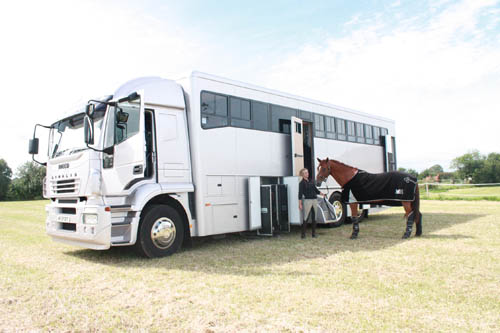Mustang Horses
A Mustang is a free-roaming feral horse of the North American west that first descended from horses brought to the Americas by the Spanish. Mustangs are often referred to as wild horses, but the more correct term is feral horses.In 1971, the United States Congress recognized Mustangs as "living symbols of the historic and pioneer spirit of the West, which continue to contribute to the diversity of life forms within the Nation and enrich the lives of the American people." Today, Mustang herds vary in the degree to which they can be traced to original Iberian horses. Some contain a greater genetic mixture of ranch stock and more recent breed releases, while others are relatively unchanged from the original Iberian stock, most strongly represented in the most isolated populations.
Today, the Mustang population is managed and protected by the Bureau of Land Management. Controversy surrounds the sharing of land and resources by the free ranging Mustangs with the livestock of the ranching industry, and also with the methods with which the federal government manages the wild population numbers. Many methods of population management are used, including the adoption by private individuals of horses taken from the range.
Mustangs are often referred to as wild horses but, since all free-roaming horses now in the Americas descended from horses that were once domesticated, the more correct term is feral horses.
The English word "mustang" comes from the Mexican Spanish word mestengo, derived from Spanish mesteño, meaning "stray livestock animal". The Spanish word in turn may possibly originate from the Latin expression animalia mixta (mixed beasts), referring to beasts of uncertain ownership, which were distributed in shepherd councils, known as mestas in medieval Spain. A mestengo was any animal distributed in those councils, and by extension any feral animal.
Today, the only true wild horse is the Przewalski's Horse, native to Mongolia. However, the horse family Equidae and the genus Equus evolved in North America. Studies using ancient DNA as well as DNA of recent individuals shows there once were two closely related horse species in North America, the "wild horse" (Equus ferus) and the "Stilt-legged Horse;" which is taxonomically assigned to various names. Thus, primitive horses lived in North America in prehistoric times. However, the entire genus Equus in North America died out at the end of the last ice age around 10-12,000 years ago, possibly due to a changing climate or the impact of newly arrived human hunters. Thus at the beginning of the Columbian Exchange, there were no equids in the Americas at all. Horses first returned with the Conquistadors, beginning with Columbus, who imported horses from Spain to the West Indies on his second voyage in 1493. Domesticated horses came to the mainland with the arrival of Cortés in 1519.
The first Mustangs descended from Iberian horses brought to Mexico and Florida. Most of these horses were of Andalusian, Arabian and Barb ancestry. Some of these horses escaped or were stolen by Native Americans, and rapidly spread throughout western North America.
Native Americans quickly adopted the horse as a primary means of transportation. Horses replaced the dog as a travois puller and greatly improved success in battles, trade, and hunts, particularly bison hunts.
Starting in the colonial era and continuing with the westward expansion of the 1800s, horses belonging to explorers, traders and settlers that escaped or were purposely released joined the gene pool of Spanish-descended herds. It was also common practice for western ranchers to release their horses to locate forage for themselves in the winter and then recapture them, as well as any additional Mustangs, in the spring. Some ranchers also attempted to "improve" wild herds by shooting the dominant stallions and replacing them with pedigreed animals.
By 1900 North America had an estimated two million free-roaming horses. Since 1900, the Mustang population has been reduced drastically. Mustangs were viewed as a resource that could be captured and used or sold (especially for military use) or slaughtered for food, especially pet food. The controversial practice of mustanging was dramatized in the John Huston film The Misfits, and the abuses linked to certain capture methods, including hunting from airplanes and poisoning, led to the first federal wild free-roaming horse protection law in 1959. This statute, known as the "Wild Horse Annie Act," prohibited the use of motor vehicles for hunting wild horses and burros. Protection was increased further by the Wild and Free-Roaming Horses and Burros Act of 1971.
The 1971 Act provided for protection of certain previously established herds of horses and burros. Today, the Bureau of Land Management is the primary authority that oversees the protection and management of Mustang herds on public lands, while the United States Forest Service administers additional wild horse or burro territories.


Equestrian Clearance - Summer Turnout Rugs | Stable Construction | Event Horses | Event Horses | Horse Websites



